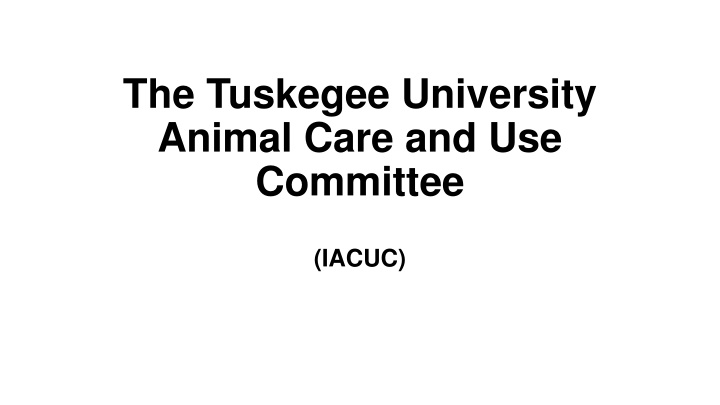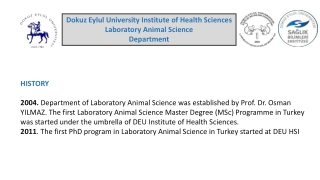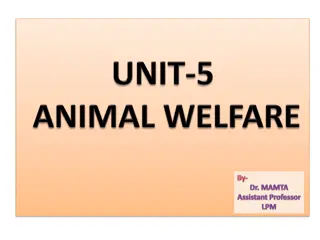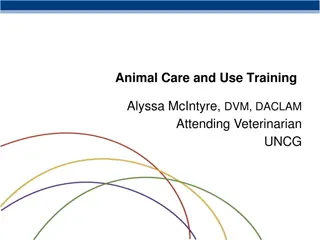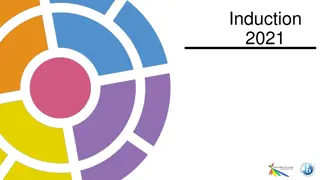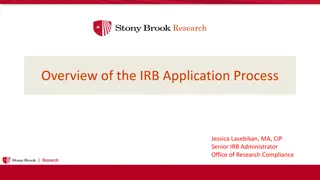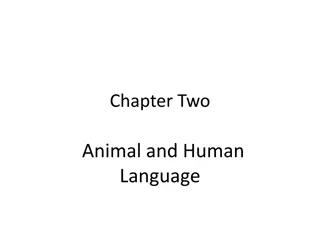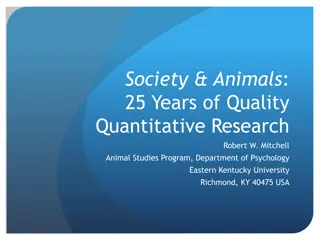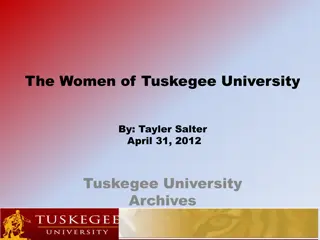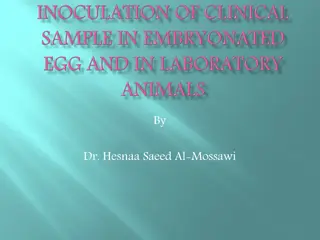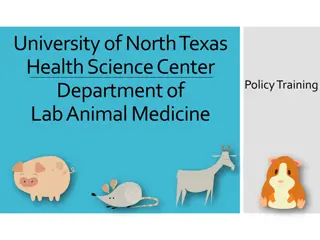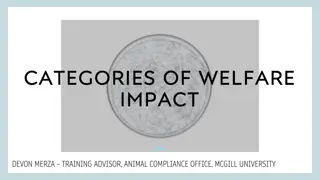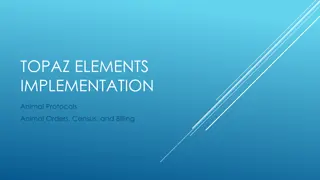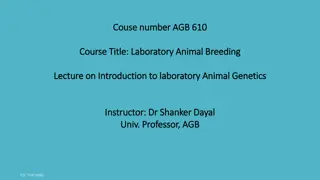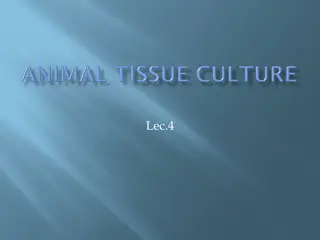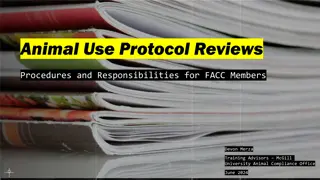Tuskegee University Animal Care and Use Committee Overview
The Tuskegee University Animal Care and Use Committee (IACUC) plays a vital role in ensuring the humane treatment of animals used in research, teaching, and testing. By overseeing the animal use program, the IACUC ensures compliance with federal laws and regulations, such as the Animal Welfare Act. The committee members, led by Dr. Mark Brown and Dr. Vijay Rangari, work together to uphold high standards of animal care and welfare at the university.
Download Presentation

Please find below an Image/Link to download the presentation.
The content on the website is provided AS IS for your information and personal use only. It may not be sold, licensed, or shared on other websites without obtaining consent from the author.If you encounter any issues during the download, it is possible that the publisher has removed the file from their server.
You are allowed to download the files provided on this website for personal or commercial use, subject to the condition that they are used lawfully. All files are the property of their respective owners.
The content on the website is provided AS IS for your information and personal use only. It may not be sold, licensed, or shared on other websites without obtaining consent from the author.
E N D
Presentation Transcript
The Tuskegee University Animal Care and Use Committee (IACUC)
TU-ACUC Organization University President and CEO Dr. Mark Brown Dr. Vijay Rangari Institutional Official Assoc. Vice President of Research Dr. Nar Gurung Co-Chair, and Member Dept. of Agricultural and Environmental Sciences, CAENS Dr. Thomas Graham Attending Vet. Dept. of Pathobiology Dr. Marcia Martinez Chair and Member, Dept. of Biology Dr. David McKenzie Member Dept. of Large Animal Clinical Sciences Dr. Jannette R. Bartlett Member Dept. of Agricultural and Environmental Sciences-CAENS Dr. Abdelrahman Mohamed Member Dept. of Pathobiology Mrs. Shakeya Tate Administrative Assistant Mr. W. Christian Member, Non-Affiliate Chief Wilbert Anderson Member, Non-Scientist
Mission of the IACUC Oversees and evaluates the entire animal use program at Tuskegee University To ensure the humane care and treatment of animals used in research teaching and testing. Ensures that TU is in compliance with the policies of the Animal Welfare Act (AWA) the Public Health Service (PHS) and the U.S. Department of Agriculture (USDA) Serve as the local oversight arm for APHIS/AC, NIH/OLAW, and AAALAC Represent the Institution and the Community
Federal Law Governing Animal Care and Use Animal Welfare Act (AWA) Signed into law by President Lyndon B. Johnson on August 24, 1966. Main federal law in the United States Regulates the treatment of animals in research and exhibition Designed to protect animals from cruelty Governs the following areas: Research; Testing; Teaching; Exhibition; Transport; Sale; Handling; Use by dealers; Protects warm-blooded animals Exceptions include Rats, mice and birds Research using mice rats and birds is protected by the Department of HHS/PHS/OLAW Consequences of noncompliance with the Animal Welfare Act Banned from owning animals Face unlimited fines Sent to prison for up to 5 years
Definition of Acronyms APHIS/AC Animal and Plant Health Inspection Service/Animal Care program Protects and improves the health quality and marketability of the nation s animals, animal products and veterinary biologics. Responsible for protecting research animals on USDA funded projects Enforces the Animal Welfare Act by inspecting laboratories and monitoring compliance with animal research regulations NIH/OLAW Office of Laboratory Animal Welfare at the National Institutes of Health Responsible for ensuring the humane care and use of animals in research, testing, and training funded by the Public Health Service AAALAC Association for Assessment and Accreditation of Laboratory Animal Care International accreditation program HHS Human Health and Human Services Enhance the health and well-being of all Americans
Federal Law Governing Animal Care and Use Health Research Extension Act (HREA) of 1985 Presents guidelines to address the following: Use of tranquilizers, analgesics, anesthetics, paralytics, and euthanasia, Appropriate pre-surgical and post-surgical veterinary medical and nursing care for animals. HREA requires facility inspections HREA requires record keeping HREA requires reporting The Department of Health and Human Services (DHHS), Office of Laboratory Animal Welfare (OLAW) ensures that institutions maintain HREA guidelines. Mandatory and surprise inspections by officials of all facilities receiving federal funds for research, testing and teaching Include reviews of randomly selected protocols submitted to the IACUC
Protocol Application Process Application forms can be obtained from Mrs Shakeya Tate, Administrative Assistant (Phone 334-727-8234; Email state@tuskegee.edu) Complete and sign protocol form Must also obtain signatures from your Department Chair and the attending Veterinarian Submit completed protocol to the IACUC Assistant Manager Mrs. Tate (Email state@tuskegee.edu) Must submit Two copies of completed application A hard copy with required signatures An electronic copy saved as a word file All applications must be submitted no less than 10 days before IACUC Review Meeting Date of IACUC Review Meetings Always the LAST FRIDAY of every month Exceptions Thanksgiving Holiday Christmas Break
Things to Consider When Completing Your Application Approval from other committees must be obtained before protocol submission to the IACUC Radiation; Human use; Biosafety; Intellectual property Project start and end dates Reasonable start date beginning after date of approval End date no more than 3 years after start date Total number of animals requested Must always match the number used in the experimental design Experimental design should contain enough detail to describe use of all animals requested Consider using tables or flow charts where possible All drugs used on animals must be listed and their purpose described Information on surgical and post surgical care must be provided Euthanasia must be justified and method of euthanasia described
Things to Consider When Completing Your Application (Blood Collection) Method of blood collection should be described in the protocol Methods differ and is dependent on animal species In general, blood can be withdrawn from venous or arterial vessels or from heart chambers Method used should be the least stressful to the animal Adequate training is required for blood collection from any animal Frequency of blood collection and volume to be collected is very important. Example for rodents should not be more than once every two weeks. Maximum volume of blood collected should not be more than 10% of total body volume After blood draw replacement of fluids is a good practice (eg. Injection with sterile saline)
Things to Consider When Completing Your Application Physical restraint The use of manual or mechanical means to limit some or all of an animal s normal movement for the purpose of examination, collection of samples, drug administration, therapy, or experimental manipulation. Method used must be approved by the IACUC, must be the shortest amount of time allowable for the experiment and cause the least amount of stress to the animal. Surgical and Post-Surgical Care Must be clearly described and executed by trained personnel. Administration of Drugs to research animals Must be clearly listed along with concentrations, method of administration and purpose Safety precautions must be described for personnel and animals for all hazardous materials Euthanasia All methods must be justified and approved by the IACUC Two methods must be described to determine death Disposal of animal carcasses must be described
IACUC Approved Methods of Euthanasia
After the IACUC Protocol Review Approved applications Principal Investigator is given a certificate signed by the IACUC chair A copy of the certificate should be displayed in the work space; animal housing unit and/or be available on demand if required by IACUC members and facility inspectors Applications requiring modifications before approval Application is returned to the Principal Investigator with a list of the corrections requested by the IACUC Corrections made to a protocol must be resubmitted for review by the IACUC to obtain approval Applications rejected Any protocol that repeats published and established experiments without justification Any protocol that proposes unjustifiable and unrelieved pain or stress to living animals Any protocol that will cause harm to research personnel and IACUC staff
